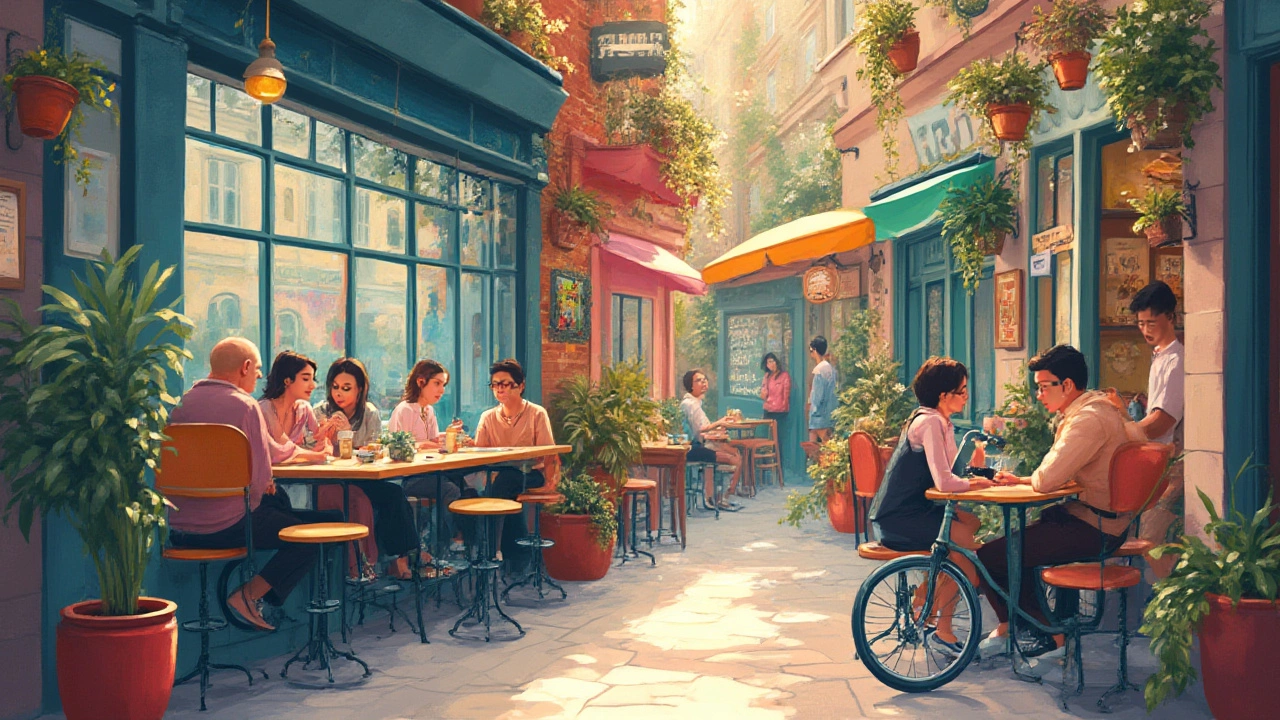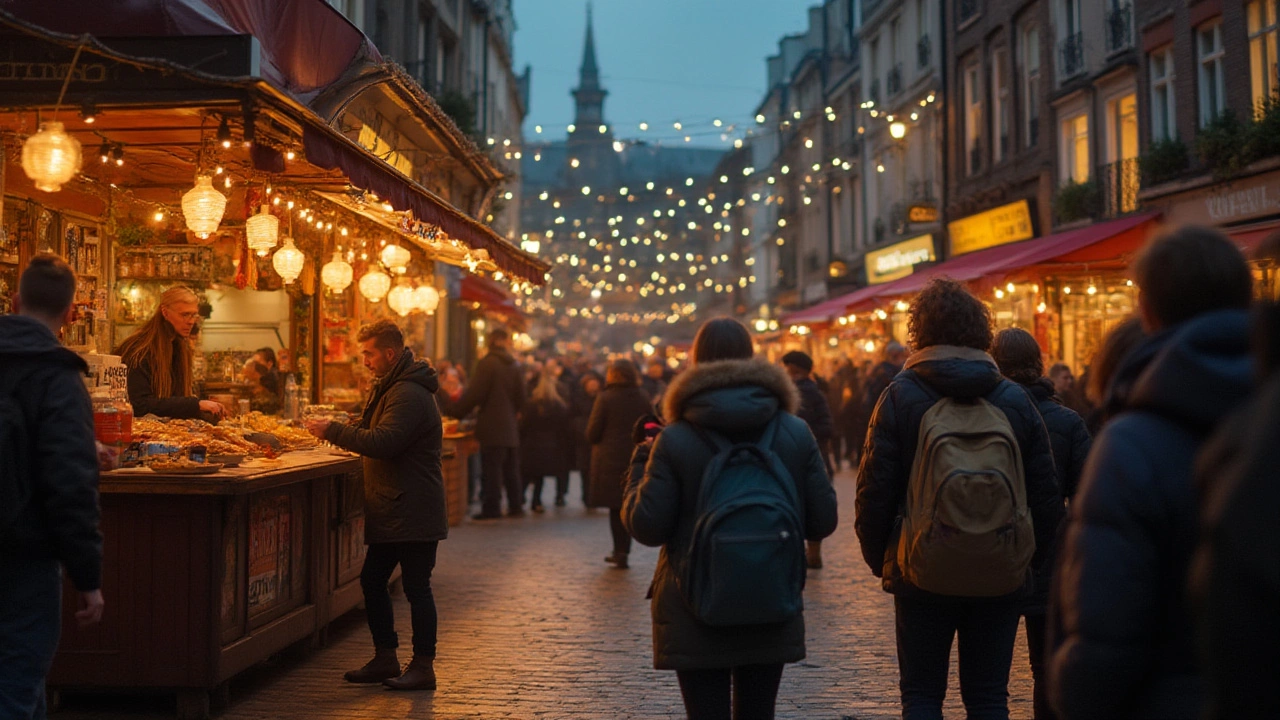Think two days is too short for adventure? Think again. City breaks tend to deliver more surprises than a full week at a beach resort. Maybe that’s what draws people back again and again. Whether you’re a planner-color-code-everything type or just want to wander until something grabs your attention, urban escapes never go stale. Even if you just have a long weekend to play with, cities treat you like there’s always more to discover. Imagine hopping off your train or plane, backpack slung over one shoulder, with an entire world bustling outside the station. There’s no time for boredom – just instant access to food, stories, art, and that weird but irresistible local energy. Wandering unfamiliar streets, ducking into markets, or catching a sunrise from an unexpected rooftop—there’s a real magic to these short stays.
The best part is cities make sure there’s something for everyone. If you’re after culture, history, wild food scenes, or simply a new playlist of street musicians, you’ll find it—usually within a single square mile. Spend a day in Paris and you might see more art than in a month at home. Go to Barcelona or Berlin, and chances are you’ll get caught in a festival you didn’t even know existed. City breaks are the secret weapon for anyone sick of routine. Surprisingly, a 2024 survey by Booking.com found that over 63% of travelers planned at least one city break this year, three times higher than cruise bookings. What do people actually do on these short escapes? Let’s get to it, because packing in the best moments is what city breaks are all about.
Sightseeing with a Twist: Iconic Sights and Unexpected Gems
People never just hit the “big three attractions” and call it a day, even if guidebooks make it sound like a checklist marathon. Sure, classics matter—London Eye, Eiffel Tower, the Colosseum. A quick snap for the group chat or your Instagram feed is almost tradition at this point. But city breaks are secretly the best reason to go off-script. In Copenhagen, visitors now skip Tivoli Gardens for Reffen, a street food village packed with upcycled containers. Rome’s tourists might hit the Pantheon, but the real fun is squeezing into Campo de' Fiori’s morning market or hunting for street art down Trastevere’s alleys. This is where things get interesting. Did you know Tokyo’s teamLab Borderless museum changes its digital art exhibits so often, you could go three times in one year and never have the same experience?
No two city breaks look the same because every city feels alive. Locals themselves rarely throng tourist hotspots, tending to slip into quieter places: a riverside park in Prague, Lisbon’s tile-covered backstreets, or sunset from Madrid’s rooftop bars. An insider tip? Try "greeters"—volunteer locals who show travelers hidden corners for free. New York’s Big Apple Greeter program, for example, matches guests with quirky city experts, from ex-cabbies to artists, all ready to share their favorite food trucks or bookstores. They won’t take you where crowds go, and that’s half the appeal. If exploring like you live there sounds good, these guides make memories that last longer than a selfie stick.
Museums deserve their own passport stamp. But forget stuffy halls—newer city galleries turn visits into playgrounds. London’s Tate Modern has its Turbine Hall installations (where you’re just as likely to see kids rolling down giant slides as adults admiring art), while Oslo’s new National Museum offers “art after dark” late openings, pairing local DJs with classic paintings. Want to save cash? The Paris Museum Pass or Berlin’s WelcomeCard get you through many doors, at a fraction of what individual entry costs. Here’s a quick comparison:
| City | Museum Pass Name | Days Valid | Free Museums Included | Public Transport | Approx. Cost |
|---|---|---|---|---|---|
| Paris | Museum Pass | 2, 4, 6 | 60+ | No | €55 (2 days) |
| Berlin | WelcomeCard | 2-6 | 30+ | Yes | €55 (3 days) |
| Amsterdam | Iamsterdam Card | 24-120h | 70+ | Yes | €65 (48h) |
Another tip? Don’t be afraid to hop on public transit. More often than not, the best city sights appear through the window of a tram in Prague, a funicular in Lisbon, or even a regular city bus through Istanbul. Chances are you’ll see neighborhoods most guidebooks ignore—worth a quick detour for local coffee or street food.
Urban Dining: From Street Food Feasts to Local Classics
If you ask ten city-breakers what they remember most, eight will say food. Street food isn’t just quick and cheap—it’s half the experience. In Bangkok, lines for pad thai noodles form before most attractions even open. London’s Borough Market lures travelers with the smell of fresh-baked bread at 7AM. Barcelona’s Boqueria Market offers culinary chaos, from jamón tastings to Instagram-ready smoothie stalls. And it’s not just about flavors—eating out unlocks the city. You hear languages blend, spot old friends meeting for lunch, and maybe even get a cooking tip from a vendor.
It’s easy to think “local food” means fancy sit-down dinners. Truth is, half the city action happens at window counters and tables small enough to barely fit your plate. Berlin’s currywurst kiosks, New York pizza slice joints, and Paris crepe stands stay open all night for a reason—sometimes the best bite isn’t in a Michelin-starred restaurant, but from a two-euro vendor on the sidewalk. Ever tried a Vienna sausage at 1AM after a concert, or watched Venetian neighbors skip fancy pasta for cicchetti (small bar snacks) along the canals? The real city stories are told with street food.
Cafe life also defines urban escapes. Every city has its own pace. In Istanbul, tiny tulip glasses of tea set the rhythm from sunrise to midnight. In Melbourne, the “flat white” rules, with local baristas battling to win your loyalty. People-watching counts as a dining activity. Most locals linger longer, turning coffee hours into a daily ritual. Try this: Pick one cafe and visit it every day of your trip. Staff will recognize you after the second attempt. By the third, you’ll know which pastry not to bother with, and which table gets the best afternoon sunlight.
Booking platforms are helpful, but don’t over-rely on Google when picking where to eat. Look for queues of locals (a sure sign of the best bites), or ask your hotel receptionist/rental host where they go for lunch. Food walking tours also unlock “hidden hit” places. In Krakow, a pierogi crawl covers tiny underground restaurants you’d otherwise miss. Budapest’s ruin bars often serve outrageously good goulash, but only during certain hours. These tours aren’t just about eating, either; you learn food history, strange local customs, and always end up with a list of too many places for your short stay.

Cultural Encounters: Markets, Festivals, and City Life
People think city breaks are about buildings and photos, but the real payoff is getting soaked in city life. Markets turn every visit into a show—Barcelona’s La Mercè, London’s Borough Market, and Florence’s Mercato Centrale all hum with local gossip, arguments over prices, and spontaneous concerts. Even window shopping feels different. In Seoul, strolling through Dongdaemun’s late-night market, you’ll find 60-year-old design stalls next to VR gaming booths. In Marrakech, souks offer a blend of noise, spice, and weaving demonstrations—all before lunch.
Festival-hopping is almost a sport. There’s nearly always something happening, even if it’s a pop-up jazz concert in the subway or a city-wide literature night that closes the streets until midnight (looking at you, Amsterdam). Major cities host events you’d plan an entire trip around—Prague’s Signal Festival bathes the city in jaw-dropping light art each autumn, while São Paulo’s street carnival draws millions for parades, costumes, and samba. These festivals transform cities overnight. Even if you don’t time your trip for the big events, chances are you’ll stumble on a smaller one: street food fairs, art installations, or surprise dance competitions.
Let’s not forget sports. Manchester on derby day becomes another planet. In Porto, FC fans spill out of bars in swirling blue scarves. Street chess in Paris, open-air Zumba in Tokyo, or skateboarders under London’s Southbank Centre all show off city energy—free to join or simply watch. Museums and churches might get the press, but sometimes the most vivid memories come from the unscheduled stuff.
Sound intimidating? Cities offer so many ways to get involved, even if you feel out of place. Try a bookstore reading night—like those in Dublin or Buenos Aires—where anyone can share their poetry. Free walking tours aren’t just maps-on-legs; guides tell wild tales totally missing from official plaques. Plus, in 2025, tech makes blending in easier than ever. Apps like MeetUp help travelers find anything from language exchanges to street photography walks on the fly. You’re never stuck for options—unless you want to be.
Still, not everything happens at street level. Rooftop bars, open-air cinemas, and pop-up exhibitions show city creativity at full blast. Cities now turn forgotten spaces—old car parks, warehouses, and even bridges—into play zones for night markets, film nights, or silent discos. In Warsaw, a former train station now hosts weekend vintage fairs. Bangkok has entire markets that vanish during the week and explode with stalls each Saturday. If you like spontaneity, city breaks reward those who say yes to random adventures.
Relaxation, Shopping, and Making Memories
Think cities can’t help you unwind? Don’t believe the hype. Urban escapes have ways of helping travelers recharge, often without you planning a thing. Parks become instant picnic zones; Luxembourg Gardens in Paris or Hyde Park in London double as locals’ backyards. Some cities, like Munich, surprise with rivers you can swim in or even surf, right in the heart of downtown. Spa culture also finds a home in the unlikeliest cities. Budapest is famous for its thermal baths—there are over a dozen sprinkled around town, some open late with live music on Fridays.
For shoppers, city breaks open up a buffet of options. You get everything from world-famous department stores like Harrods, to tiny stalls selling handmade jewelry, to weekend flea markets packed with vintage vinyl. Even if buying isn’t on your agenda, exploring secondhand bookstores in Lisbon or trying on hand-stitched kimonos in Kyoto feels like a treasure hunt. Want to grab something nobody else at home can find? Hit local designers’ shops, not just tourist malls. Often, artists themselves work the counter, happy to explain the story behind your one-of-a-kind scarf or painting.
Of course, making memories tops the list. Every city break has at least one "I still can’t believe that happened" moment: singing karaoke with strangers in Seoul, getting a haircut from a third-generation barber in Istanbul, or accidentally joining a parade in Montreal. Most travelers agree that short trips encourage more risk-taking; knowing you’re leaving soon somehow makes you bolder. If your phone starts to overload with photos by day two, don’t stress. Print a few out when you get home, or start keeping a travel journal. Snapshots don’t just remind you where you went—they help you remember the stories behind those quick city connections.
Before you set off, a few practical tips: Check city transit apps for real-time schedules; learn the basics of local greetings (trust me, a “merci” or “grazie” wins hearts); pack shoes comfy enough for 20,000-step days. And if you get lost? Grab a pastry, people-watch, and remember that “aimless wandering” is practically a city break’s hidden agenda. The point isn’t just what you see—it’s the energy, the surprises, the feeling you get from diving into city life, if only for a weekend. City breaks aren’t second-rate escapes—they’re concentrated shots of adventure, all packed into a few memorable days.
